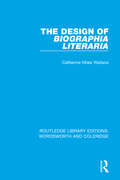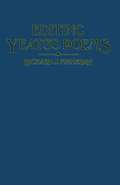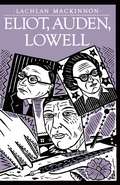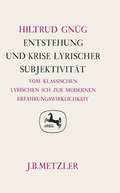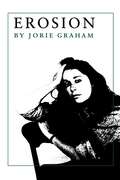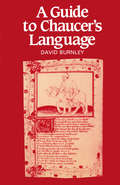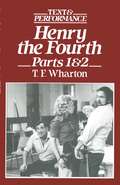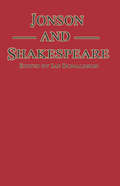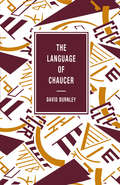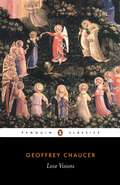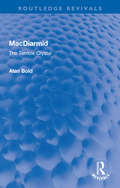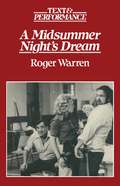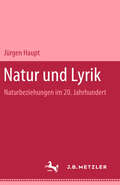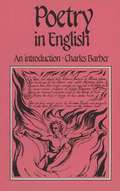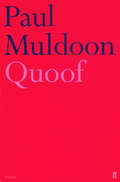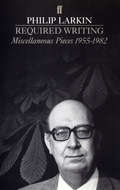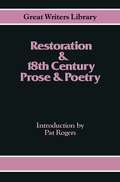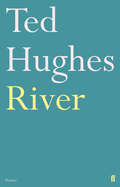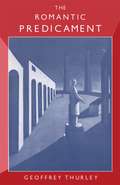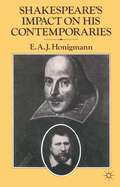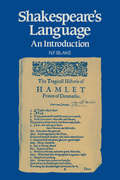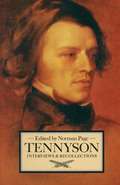- Table View
- List View
The Design of Biographia Literaria (RLE: Wordsworth and Coleridge)
by Catherine M. WallaceFirst published in 1983, this book examines a work whose intricacies have baffled and infuriated generations of readers and proposes a theory of Coleridge’s writing habits that "explain(s) his explanation". The author painstakingly analyses the Biographia’s organising structure distinguishing between the daring conception and often inept execution of Coleridge’s idea of critical discourse. It is argued that Coleridge’s autobiographical format present a richly metaphorical "self" whose literary life has led to the now-famous doctrine of secondary imagination. The author’s command of Coleridge scholarship will shed new light on the Biographia for specialists and non-specialists alike.
The Design of Biographia Literaria (RLE: Wordsworth and Coleridge)
by Catherine M. WallaceFirst published in 1983, this book examines a work whose intricacies have baffled and infuriated generations of readers and proposes a theory of Coleridge’s writing habits that "explain(s) his explanation". The author painstakingly analyses the Biographia’s organising structure distinguishing between the daring conception and often inept execution of Coleridge’s idea of critical discourse. It is argued that Coleridge’s autobiographical format present a richly metaphorical "self" whose literary life has led to the now-famous doctrine of secondary imagination. The author’s command of Coleridge scholarship will shed new light on the Biographia for specialists and non-specialists alike.
Entstehung und Krise lyrischer Subjektivität: Vom klassischen lyrischen Ich bis zur modernen Erfahrungswirklichkeit. Germanistische Abhandlungen, Band 54
by Hiltrud GnügErosion
by Jorie GrahamFrom Erosion:SAN SEPOLCRO Jorie Graham ? . . . . How cleanthe mind is,holy grave. It is this girlby Pierodella Francesca, unbuttoningher blue dress,her mantle of weather,to go intolabor. Come, we can go in.It is beforethe birth of god. No-onehas risen yetto the museums, to the assemblyline bodiesand wings to the open airmarket. This iswhat the living do: go in.It's a long way.And the dress keeps openingfrom eternityto privacy, quickening.Inside, at the heart,is tragedy, the present momentforever stillborn,but going in, each breathis a buttoncoming undone, something terriblynimble-fingeredfinding all of the stops. Jorie Graham grew up in Italy and now lives in northern California.She has received grants from the Ingram-Merrill Foundation, the Bunting Institute, and the John Simon Guggenheim Memorial Foundation.Her first book, Hybrids of Plants and of Ghosts (Princeton, 1980), won the Great Lakes Colleges Association Award as the best first book of poems published in 1980.
Erosion
by Jorie GrahamFrom Erosion:SAN SEPOLCRO Jorie Graham ? . . . . How cleanthe mind is,holy grave. It is this girlby Pierodella Francesca, unbuttoningher blue dress,her mantle of weather,to go intolabor. Come, we can go in.It is beforethe birth of god. No-onehas risen yetto the museums, to the assemblyline bodiesand wings to the open airmarket. This iswhat the living do: go in.It's a long way.And the dress keeps openingfrom eternityto privacy, quickening.Inside, at the heart,is tragedy, the present momentforever stillborn,but going in, each breathis a buttoncoming undone, something terriblynimble-fingeredfinding all of the stops. Jorie Graham grew up in Italy and now lives in northern California.She has received grants from the Ingram-Merrill Foundation, the Bunting Institute, and the John Simon Guggenheim Memorial Foundation.Her first book, Hybrids of Plants and of Ghosts (Princeton, 1980), won the Great Lakes Colleges Association Award as the best first book of poems published in 1980.
The Language of Chaucer (The Language of Literature)
by David BurnleyIn this book David Burnley demonstrates that an understanding of Chaucer's social, cultural, and literary world is vital to our understanding of his language and meaning. The first part of the book, drawing on modern linguistics, concentrates on the text and on approaches to interpreting the poet's grammar and syntax. The second part treats Chaucer's language and vocabulary in its broader contemporary context, dealing with language use, style and variety.
Love Visions (Penguin Classics Series)
by Geoffrey Chaucer Brian StoneSpanning Chaucer's working life, these four poems build on the medieval convention of 'love visions' - poems inspired by dreams, woven into rich allegories about the rituals and emotions of courtly love. In The Book of the Duchess, the most traditional of the four, the dreamer meets a widower who has loved and lost the perfect lady, and The House of Fame describes a dream journey in which the poet meets with classical divinities. Witty, lively and playful, The Parliament of Birds details an encounter with the birds of the world in the Garden of Nature as they seek to meet their mates, while The Legend of Good Women sees Chaucer being censured by the God of Love, and seeking to make amends, for writing poems that depict unfaithful women. Together, the four create a marvellously witty, lively and humane self-portrait of the poet.
MacDiarmid: The Terrible Crystal (Routledge Revivals)
by Alan BoldFirst published in 1983, Hugh MacDiarmid: The Terrible Crystal is a detailed introduction to the poetry of Hugh MacDiarmid. Hugh MacDiarmid’s poetry shows a persistent search for a consistent intellectual vision that reveals, in all its facets, the source of creativity recognised by the poet as ‘the terrible crystal’. This introduction to his poetry shows that MacDiarmid’s great achievement was a poetry of evolutionary idealism, that draws attention to itself by a series of culture shocks. It places MacDiarmid as a nationalist poet in an international context: a man whose unique concept of creative unity enabled him to combine the Scottish tradition with the linguistic experimentation of Joyce and Pound. Hugh MacDiarmid: The Terrible Crystal is ideal for those with an interest in the poetry of Hugh MacDiarmid, Scottish poetry, and poetry and criticism more broadly.
MacDiarmid: The Terrible Crystal (Routledge Revivals)
by Alan BoldFirst published in 1983, Hugh MacDiarmid: The Terrible Crystal is a detailed introduction to the poetry of Hugh MacDiarmid. Hugh MacDiarmid’s poetry shows a persistent search for a consistent intellectual vision that reveals, in all its facets, the source of creativity recognised by the poet as ‘the terrible crystal’. This introduction to his poetry shows that MacDiarmid’s great achievement was a poetry of evolutionary idealism, that draws attention to itself by a series of culture shocks. It places MacDiarmid as a nationalist poet in an international context: a man whose unique concept of creative unity enabled him to combine the Scottish tradition with the linguistic experimentation of Joyce and Pound. Hugh MacDiarmid: The Terrible Crystal is ideal for those with an interest in the poetry of Hugh MacDiarmid, Scottish poetry, and poetry and criticism more broadly.
Quoof
by Paul Muldoon'These poems delight in a wily, mischievous, nonchalant negotiation between the affections and attachments of Muldoon's own childhood, family and place, and the ironic discriminations of a cool literary sensibility and historical awareness.' Times Literary Supplement
Required Writing: Miscellaneous Pieces 1955-1982 (Poets On Poetry Ser.)
by Philip LarkinThe appearance of Philip Larkin's second prose collection - reviews and critical assessments of writers and writing; pieces on jazz, mostly uncollected; some long, revealing and often highly entertaining interviews given on various occasions - was a considerable literary event. Stamped by wit, originality and intelligence, it was vintage Larkin throughout:'Deprivation is for me what daffodils were for Wordsworth.''I see life more as an affair of solitude diversified by company than as an affair of company diversified by solitude.'Q. 'How did you arrive upon the image of a toad for work or labour?'A. 'Sheer genius.'
River: Poems by Ted Hughes
by Ted HughesFirst published in 1983, River celebrates fluvial landscapes, their creatures and their regenerative powers.Inspired by Hughes's love of fishing and by his environmental activism, the poems are a deftly and passionatelyattentive chronicle of change over the course of the seasons. West Country rivers predominate ('The West Dart'and 'Torridge'), but other poems imagine or recall Japanese rivers or Celtic rivers, and 'The Gulkana' exploresan ancient Alaskan watercourse. At its core the sequence rehearses, in various settings, from winter to winter,the life-cycle of the salmon.All this, too, is stitched into the torn richness,The epic poiseThat holds him so steady in his wounds, so loyal to his doom,so patientIn the machinery of heaven.from 'October Salmon'
